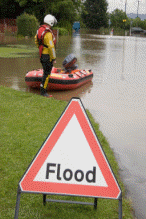Our “wet winter” and tree root subsidence claims in 2014
 The wet weather last winter is unlikely to provide much comfort for local authorities when it comes to tree root subsidence claims, warns Andrew Plunkett.
The wet weather last winter is unlikely to provide much comfort for local authorities when it comes to tree root subsidence claims, warns Andrew Plunkett.
The “extreme” rainfall over this winter, affecting the south east of England in particular, has given rise to subsidence problems in the form of sinkholes and landslips, as well as more direct damage in the form of flooding. Could there be some upside to these very wet conditions however in relation to claims for tree root subsidence?
The Met Office has confirmed that this winter saw exceptional periods of rainfall. The total rainfall in the south east and central southern England was the wettest two month period since 1910.
The British Geological Survey confirmed that this sustained period of wet weather from December 2013 to February 2014, and the channelling of this water through the drainage systems, are the main triggers for the recent spate of natural sinkholes, landslides and failures of engineered slopes. The number of natural sinkholes and similar “collapse subsidence” features reported in February 2014, for example, was 18, compared to a long term average of 2 per month.
So far as subsidence caused by tree roots is concerned, concern was being expressed last year that the hot summer (in particular the hot July, which was described by the Met Office as “the most significant heatwave since July 2006) could lead to an “event” year for subsidence i.e. that the number of claims resulting would be markedly higher than the number of claims one would expect to arise in the course of a “normal” year.
Thereafter however there was a considerable amount of rainfall from late August 2013 which will have helped to cause such a threat to recede.
One might expect that the very wet winter is similarly likely to reduce the risk of tree root subsidence in 2014: as water levels have been restored in many areas to their normal levels, or higher, given even a reasonably dry summer those levels may not become unusually depleted, tree roots may not have to extend themselves further to reach water, and any subsidence might be expected to be moderate.
This is particularly so given that a relatively large number of tree root subsidence claims arise in the London area due to the presence of clay sub-soil within that area of south-east England (clay soils being the most susceptible to shrinkage if desiccated and therefore to the effect of tree roots), and the heavy rainfall this winter fell in that area.
Tree root subsidence claims do not necessarily follow such a predictable path however. Conditions where the groundwater is relatively low, for example, do not necessarily lead to subsidence problems developing.
The first consequence of heavy rain is to encourage the growth of the tree both above and below the soil line. As a result of increased growth, the water demand from trees and shrubs is similarly likely to increase.
Secondly, subsidence is a matter of cyclical movement, and damage can often manifest itself after a significant swing in such movement. Heavy rainfall will encourage complete recovery of a clay sub-soil i.e. as the clay absorbs the moisture it will expand, and any buildings standing on that ground are likely to rise. If the wet weather is followed by a dry spell and consequent desiccation (and therefore shrinkage) of the sub-soil the subsidence of the building is likely to cause greater crack damage and a corresponding increase in subsidence claims.
This is illustrated by the fact that the risk of subsidence claims arising tends to be higher when a dry year is preceded by a wet one – 2002 was a relatively wet year and was followed by a relatively dray year in 2003, which was followed by a surge of claims; 2008/9 were relatively “wet” years and a dry summer in 2010 again led to a relatively high number of claims.
The effect of this winter’s weather is therefore unlikely to moderate any tree root subsidence claims which follow the summer of 2014: if the South-East of England in particular were to experience a long, hot summer, the preceding wet weather is only likely to increase the risk of subsidence claims emerging.
As to the prospects of a hot dry summer in 2014, it is too early to tell: at least one scientific source has predicted that 2014 is likely to be one of the hottest on record, due to a study of the effects of El Nino (as reported in the Independent on 11 February 2014). Other climatologists have cast doubt on such long range predictions however.
What is certain, unfortunately, is that the wet winter weather does not offer local authorities (and their insurers) the “silver lining” of a low subsidence risk in 2014.
Andrew Plunkett is a lawyer at BLM. He can be contacted This email address is being protected from spambots. You need JavaScript enabled to view it..